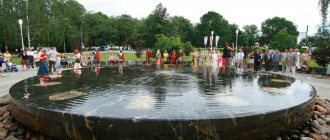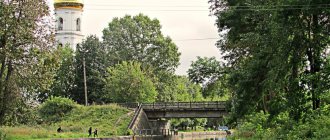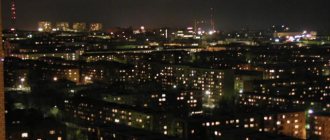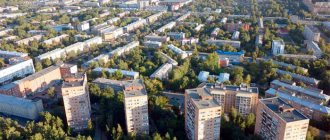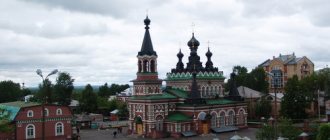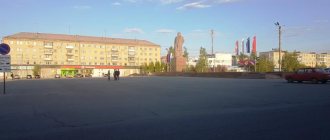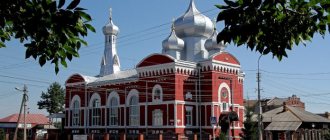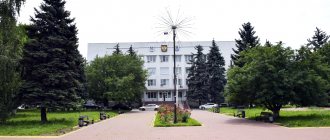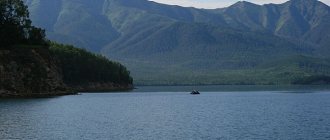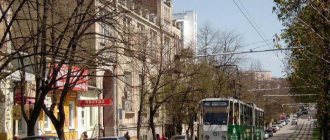City in Chelyabinsk region, Russia
| Zlatoust Zlatoust | |
| City | |
| New Year's Square, Zlatoust | |
| Flag Coat of arms | |
| Location of Zlatoust | |
| Zlatoust Location of Zlatoust Show map of Russia Zlatoust Zlatoust (Chelyabinsk region) Show map of Chelyabinsk region | |
| Coordinates: 55°10'N 59°40'E / 55.167°N Latitude 59.667°E / 55.167; 59.667 Coordinates: 55°10'N 59°40'E. / 55.167°N Latitude 59.667°E / 55.167; 59,667 | |
| A country | Russia |
| Federal subject | Chelyabinsk region |
| Based | 1754 |
| Government | |
| • Mayor | Maxim Pekarsky |
| Height | 125 m (410 ft) |
| population size (2010 Census) [1] | |
| • General | 174 962 |
| • Evaluate (2018) [2] | 166 885 ( -4,6% ) |
| • Classify | 103rd place in 2010 |
| Administrative status | |
| • Subordinate | City of Zlatoust [3] |
| • Capital from | City of Zlatoust [3] |
| Municipal status | |
| • Urban district | Zlatoust urban district [3] |
| • Capital from | Zlatoust urban district [3] |
| Timezone | UTC+5 (MSK+2[4]) |
| Postal code [5] | 456200 |
| Dialing code(s) | +7 3513 |
| OKTMO ID | 75712000001 |
| Web site | www.zlatoust.info |
Zlatoust
(Russian: Zlatoust, IPA: [zlətɐust]) is a city in Chelyabinsk Oblast, Russia, located on the Ai River (in the Kama Basin), 160 km (99 mi) west of Chelyabinsk. Population: 174,962 (2010 census); [1] 194,551 people (2002 census); [6] 207,794 (1989 census); [7] 181,000 (1971); 161,000 (1959); 99,000 (1939); 48,000 (1926); 21,000 (1910).
General information
The founding date of the settlement is considered to be 1754. Zlatoust grew up next to a metallurgical plant. Sixty years later, the first weapons factory appeared in the city. She attracted craftsmen and artisans to these areas, and the population of Zlatoust gradually increased. Later, a steel mill began operating in the settlement. Municipality status was awarded in the second half of the 19th century.
According to the 1800 census, there were 2,500 males in the city. It took Chrysostom only forty years to quadruple this figure. In the middle of the 19th century, the city topped the list of the largest settlements in the Urals. The population of Zlatoust at that time was 10,000 people. In 1850, it was second only to Nizhny Tagil, Tyumen, Perm and Yekaterinburg. In 1865 the number of inhabitants exceeded 14,800 people. In 1897 it was 20,469.
The national composition was represented by Russians, Tatars and Bashkirs. The share of Slavs in the population of Zlatoust exceeded 96 percent. In 1935, the number of citizens exceeded 105,000. Newcomers began to crowd out the local Kuzyuks. The main flows of migrants came from the central regions of Russia, Vyatka province, Bashkiria and Samara region.
During the Great Patriotic War, enterprises from the central part of Russia were evacuated to the city. The Podolsk Mechanical Plant and the Moscow Watch Factory were based in Zlatoust. Due to newcomers, the population of Zlatoust increased from 103,000 to 130,000. The modern city is divided into the following areas:
- 7 area;
- White Key;
- Nakhalovka;
- Pink salmon;
- West;
- Matrosova;
- Red hill;
- Machinery plant.
City of Zlatoust (Chelyabinsk region)
Zlatoust is a city in the Chelyabinsk region on the Ai River (Ufa river basin), 120 km west of the regional center of Chelyabinsk (160 km by railway), 1750 km east of Moscow (1941 km by railway). Russia. The administrative center of the Zlatoust urban district, a city of regional significance, to which 9 rural settlements are subordinate. Included in the list of historical cities of Russia. The population of the city is 163,919 people. (2020).
The length from south to north is 15.4 km, from west to east 10.4 km. Area 118.2 km². The city's topography is typically mountainous, with sharp changes in elevation. Residential areas are located at an altitude of 400-600 m from sea level.
Zlatoust, city pond, archival and modern photos
In the center of the city, at the confluence of the Tesma River and the Ai, there is a city pond. The border between Europe and Asia runs in the vicinity of the city. In the east there is the Uraltau ridge, in the west - the Urenga ridge and the Myshlyai mountains. From the north, the valley is closed by Taganay and the Nazminsky ridge.
The Trans-Siberian Railway passes through the city. Near the city there is the M-5 Ural federal highway. The city is home to the administration of the Zlatoust region of the South Ural Railway and the Zlatoust railway station, built during the construction of the Samara-Zlatoust Railway at the end of the 19th century.
The first color photographs of Chrysostom were taken by S.M. Prokudin-Gorsky in 1909. In 1909-1916. the photographer traveled throughout a significant part of the Russian Empire, photographing ancient churches, monasteries, factories, cities and villages. The top photo shows a view of the city from Tesma, the bottom photo shows the chapel in the name of St. Nicholas
Zlatoust is an industrial and factory city. In the old part of the city, where there are most industrial enterprises, there is an increased level of air pollution. Periodic cleaning of the city pond and the Balashikha reservoir from bottom sediments is carried out, a gravity tunnel with a length of 2100 m has been built under the Malaya Tatarka Mountain, and the reclamation of city landfills is being carried out.
The city owes its appearance to the construction of an iron smelting, iron and copper smelting plant. The first Russian settlement on the territory of modern Zlatoust arose at the end of the 17th century. and is associated with the search for gold.
In 1664, Elder Lot from the Dalmatovsky Assumption Monastery admitted under torture that he knew that gold and silver was being smelted on Lake Irtyash, mined on a certain “Siberian Mountain” in the upper reaches of Ufa, Yaik and Gadai.
In 1668-1674. A military-geological expedition of more than a thousand people with guns and equipment was sent to these places, which in 1672, in the area of the current Taganay National Park, erected the Novo-Uralsky fort, which became the first Russian settlement in the Chelyabinsk region. The expedition ended in failure, as the chronicle says: “Nothing was found, and the sovereign’s treasury suffered great futility and destruction.” After this, the prison was abandoned for a long time.
View of the historical city center from Mount Kosotur, 1900.
In the era of Peter I, the metallurgical industry became the basis of the economy of the Urals. In 1708, the story about the “Siberian Mountain” was accidentally discovered in the documents of the Siberian Provincial Chancellery and reported to the secretary of Peter I A.D. Makarov. V.N. Tatishchev was instructed to check the information about silver ore. In the 1720s. a new expedition explored the area, but found nothing interesting. Only the expedition of 1741 found iron ore and indicated the location for the possible construction of a plant.
In the 18th century The leaders in the construction of factories in the Southern Urals were Simbirsk merchants I.B. Tverdyshev and I.S. Myasnikov, Tula merchants Mosolovs and L.I. Luginin.
Chapel-pavilion in the name of the Holy Blessed Prince Alexander Nevsky
The breeder Maxim Perfilyevich Mosolov and his brothers Alexei, Ivan the Bolshoi and Ivan the Lesser originate from Tula gunsmiths. In 1721, they owned only a hand-made domnitsa and two iron forges, but by the middle of the century the Mosolovs already had six factories in the central provinces, producing up to 50 thousand pounds of cast iron per year. Due to the depletion of the forest in the middle of the 18th century. industrial enterprises are gradually leaving the Tula-Kashira metallurgical region. The Mosolovs, following their fellow countrymen the Demidovs, G.S. Krasilnikov and Y.R. Korobkov study the Southern Urals.
In 1751, thanks to I.M. Mosolov was awarded a contract for the construction “in the Isetsk province inside Bashkiria in the Kuvakan volost on the Satka and Kuvashi rivers of an iron plant called Zlatoust.” But after examining the site, he came to the conclusion that due to the lack of water and scarcity of forest, the project was not feasible, so he proposed to the Orenburg provincial office to move the construction to a new location at the confluence of the Tasma River and Ai. On August 31, 1754, permission was received - from that time the Zlatoust plant and the city of Zlatoust began.
Lower Pond Dam, 1899
Why did the Mosolovs decide to name their new one? Firstly, the contract of 1751 was concluded in late autumn on November 11, on the eve of the day of St. John Chrysostom (November 13). Secondly, that the icon of John Chrysostom was family and revered among the Mosolovs. Finally, the settlements and factories of the region were named after the names of Orthodox holidays - for example, the Blagoveshchensky, Voskresensky, Preobrazhensky and Troitsky factories.
Zlatoust, view of the factory yard
The plant under construction at that time was a mini-fortress, having “to guard weapons such as cannons and buckshot.” In the middle of the 18th century. The Mosolovs' projects for the construction of Zlatoust and other factories were under threat due to the division of family property. In 1759, by lot, the Zlatoust plant came into the possession of Maxim Mosolov, who, to expand production, transferred almost five hundred serfs and assigned peasants from factories near Moscow to the Southern Urals.
On August 14, 1761, the plant came into operation and became an iron-smelting, iron-making and copper-smelting plant. After the death in 1768 M.P. Mosolov's plant went to his eldest son Vasily, who sold it to his commercial and industrial partner L.I. Luginin.
During the Peasant War, the plant was burned down. According to the testimony of the Perm spiritual board in the Zlatoust plant, the Church of the Three Saints “with 113 courtyards was plundered and burned by Bashkirs and Russians who were in a villainous gang.” L.I. Luginin received 102 thousand rubles from the state to restore the plant. and by 1776 the enterprise was operational. At the Zlatoust plant, two blast furnaces, 6 copper smelters and 20 furnaces with hammers were built. He was one of the first in the Urals to introduce the production of raw steel, sheet iron, cast iron utensils, rolling and anchor production. One and a half versts from the main one was the Nizhne-Zlatoust plant, which acted as one of the main ones.
City residents on vacation, photo from the 1900s.
In the factory village, a church in the name of the Three Saints was restored, for which L.I. Luginin, according to legend, brought a bell from Novgorod, cast in Lübeck in 1664. He opened a hospital for artisans and working people, and a three-year school for their children. L.I. Luginin settled next to the factory buildings, building in 1783-1785. a two-story stone house with a mezzanine, a garden, a vegetable garden, a greenhouse, ponds and a stable, which today houses a local history museum.
In 1784, by decree of Catherine II, Troitsky district was formed as part of the Ufa region. After the transformation of the Ufa governorship, the village and district in 1796 administratively became part of the Orenburg province.
After the death of L.I. Luginin in 1785. The Zlatoust plant went to his grandson Ivan Maksimovich, who managed the plant from Moscow and brought the matter into financial difficulties. In 1797-1801 The Senate and the Berg Collegium could not decide whether to take the plant into the treasury or give it to private maintenance. From 1801 to 1811 plant under the management of the famous Moscow merchant A.A. Knauf. In 1811, the plant was bought by the state, and the factory village acquired the status of a mountain town. In 1815, a weapons factory was built (edged weapons, the first craftsmen were gunsmiths from the German city of Solingen), in 1859 - a steel foundry (the first steel cannons in Russia were cast).
Boris Mikhailovich Shaposhnikov, Russian and Soviet military leader, military and statesman, Marshal of the Soviet Union was born in the city of Zlatoust, Ufa province on September 20 (October 2), 1882. Photo of 1915.
With the transfer to the treasury, the Zlatoust plant became the center of the Zlatoust mountain district, and Zlatoust became a mountain town. There is an opinion that the date Zlatoust was given the status of a city should be considered 1811, when the plant became a government department and became the center of the mountain district, but this is a controversial issue in South Ural history - the year of foundation of the city is considered to be 1865.
At the beginning of the century, the Zlatoust plant acquired all-Russian fame for the quality of its products and an abundance of technical improvements. Many outstanding mining engineers and craftsmen left their mark on the plant's history. Let's name mining engineers and heads of the mining district - Pavel Petrovich Anosov, who discovered the secret of damask steel, Pavel Matveevich Obukhov, who cast the first Russian steel cannons and craftsman Ivan Nikolaevich Bushuev - “Ivanko Krylatko”, the creator of the flying horse, whose artistic creations on edged weapons adorn many museums peace. Currently, the winged horse is the coat of arms of Chrysostom.
From the beginning of the 19th century. Zlatoust is the center of artistic metal engraving, which originated as an auxiliary production for decorating sabers and swords. Gift weapons are decorated with gold and silver notches and decorative panels are made on steel plates. Foreign craftsmen come to the arms factory in the 1830s. a new building in the classicist style is being built for it. Thanks to foreign and Russian masters I.N. Bushuev, I.L. Boyarshinov and others formed the style of Zlatoust decorated weapons.
In the 1820s. Industrial gold mining begins on the territory of the Zlatoust Mining District. In 1824, Emperor Alexander I visited the city, one of the mines was named in honor of this - Tsarevo-Alexandrovsky.
In 1826, the publisher of “Domestic Notes” P. Svinin wrote that “The Zlatoust plant is more like a city than many county towns, both in its regulation and in its movement. The streets are quite wide and there are many stone buildings with several floors.”
The Holy Trinity Cathedral, the main temple of Chrysostom, designed for 3000 people, was the largest in the Ufa province. It was founded in 1835 and took five years to build. The height of the temple was 51.2 m, length - 44.8 m, width 29 m, internal area - 910 m². The building was surrounded by colonnades 11 m high. In 1843-1848. A five-tier bell tower with a height of 72.5 m was erected next to the cathedral.
In 1842, the chief architect of the Zlatoust factory F.A. Telezhnikov. drew up and approved the first master plan for the development of Zlatoust. In 1865, in connection with the creation of the Ufa province, the city became part of it as the administrative center of the Zlatoust district. In 1857, Emperor Alexander II visited the city.
In 1890, the Zlatoust railway station was put into operation. This simplified the delivery of metallurgical products from the plant to the central regions - before this, iron was smelted on barges. The Samara-Ufa railway was renamed the Samara-Zlatoust railway. In 1891, in connection with the construction of the railway to Chelyabinsk and further to the Siberian Railway, the plant began producing rail fastenings.
Chrysostom, meeting of Emperor Nicholas II, 1904
In 1900, the city had 2916 houses, of which 299 were stone, five Orthodox churches, one Old Believer church, a Roman Catholic church and a Protestant church. There were a three-class school, 2 one-class schools (male and female), 4 primary schools, city and factory hospitals, pharmacies, and a city library.
There were factories - a state-owned iron-smelting and iron-making plant (1,000 workers), 7 polishing plants, a beer-mead factory, a soap factory, a cloth factory, and a number of small enterprises, including an artel of artisans making iron and steel products (3,000 workers).
Workers' demonstration on December 8, 1905
In 1903, there was a mass shooting of a meeting of striking workers of the Zlatoust state-owned plant. 69 people were killed, more than 250 were injured, and more than 100 were arrested.
By the mid-1910s, the city's population numbered approximately 20,000.
Celebration of the 300th anniversary of the House of Romanov, 1913
On December 4, 1917, Soviet power was established in Zlatoust. On May 27, 1918, a battle took place near the railway station between legionnaires of the Czechoslovak corps and local Red Guards, who tried to disarm a train of 800 legionnaires. On June 25, 1918, the city was abandoned by Red Guard units. On July 13, 1919, during the Zlatoust operation, the city was taken by units of the 5th Army of the Eastern Front of the Red Army.
At the beginning of 1922, in connection with the abolition of the Ufa province, Zlatoust became part of the Autonomous Bashkir Socialist Soviet Republic. In August 1922 it became the district center of the Chelyabinsk province. After its abolition in 1923 and the creation of the Ural region, it became the administrative center of the Zlatoust district.
Demonstration in Zlatoust on May 1, 1917
In the 1920s There have been repeated calls to rename the city. Thus, the local newspaper “Proletarskaya Mysl” invited townspeople to send their own versions of the name. The names Yuzhnouralsk, Stalsk, Krasnoznamensk, Proletarsk, Internationalgrad, Nazarovsk, Budennovsk, Kalininsk, Uralostalsk, Pervomaisk, Gornouralsk, Stalegorsk, Gornostalsk, Stalezavodsk and Uralostalsk were discussed. When I.V. Stalin turned 50 years old, letters of demand began to appear in the city newspaper: “Stalinsk instead of Chrysostom”, “Stalin Iron and Steel Works”, etc.
House of Culture for Railway Workers, 1927
In December 1929, the plenum of the Zlatoust District Executive Committee adopted a resolution: “Rename the city of Zlatoust to the city of Stalinsk (in the Urals) and the district - Stalinsky (in the Urals).” The decision to rename did not receive the approval of the All-Russian Central Executive Committee: “The proposed renaming to Stalinsk and Stalinsky will inevitably cause a number of misunderstandings both along the lines of the People's Commissariat of Postal Service and the People's Commissariat of the Union of the USSR, because There are already cities and railways on the territory of the Union. stations and other administrations units with a consonant name."
During the Great Patriotic War, evacuated equipment and specialists from more than twenty enterprises arrived in Zlatoust - Tula Armory, Podolsk Mechanical, First Moscow Sentry, First State Precision Technical Stones (TTK-1), 2nd Luga Abrasive, etc. More than 30 took part in the war thousand Zlatoust residents, more than 9 thousand of them did not return home.
Zlatoust, st. Karl Marx, built in the 1950s. in the spirit of Stalinist classicism. Photo from the 1950s.
During the war years, the city's enterprises produced 1.58 million tons of steel, 1.4 million tons of rolled metal, 13.8 million shells and mines, 109.5 thousand machine guns of various brands, 41.8 thousand aircraft guns, 292.3 thousand ... watches for tanks, aircraft and the Navy. During the war, camp No. 337 of the NKVD of the Chelyabinsk Region was located in the city for interned prisoners of war of foreign armies.
Zlatoust was awarded the Order of the October Revolution (1980). In 2004, Zlatoust became the administrative center of the Zlatoust urban district of the Chelyabinsk region.
Among the city's attractions are the Bell Tower of John Chrysostom, the monument to P.P. Anosov, monument to the victims of the execution on March 13, 1903, Taganay National Park, Temple of St. Seraphim of Sarov, Temple of St. Simeon of Verkhoturye, Church of St. John Chrysostom, Chapel in honor of the Holy Righteous Alexander Nevsky, Chapel in honor of St. John Chrysostom, Church of the Great Martyr St. George the Victorious and the Chrysostom Cathedral Mosque.
Demographic situation
In 2005, the city had a population of 190,000. With each subsequent year, the number of townspeople decreased. In 2010 it amounted to 174,000, and in 2015 it decreased to 169,000. In 2017, the population of Zlatoust reached 167,000 people. According to 2014 data, Zlatoust ranks third in the overall ranking of settlements in the Chelyabinsk region.
The birth rate in 2011 was 12.5. According to data for the current period, the city occupies 112th position in the all-Russian ranking of settlements by number of residents. The number of working-age population exceeded 79,000. Of these, 33,000 people are employed in large and medium-sized enterprises of the city. The number of entrepreneurs and people employed in small businesses amounted to 29,000. 13,000 are employed in the public sector. The number of officially registered unemployed approached 2,000. The unemployment rate exceeded 2.27%.
The city is home to 16.9% of people under eighteen years of age. The number of able-bodied citizens is 59%. The number of pensioners reached 24%. People with secondary specialized education represent the majority of the population of Zlatoust. The number of people who completed their studies at the university is 11%.
Less than two percent of city residents have incomplete higher education. State supervisory authorities have registered about 0.8% of people who have not received school certificates. 14% have incomplete secondary education. 6.5% have primary education.
In 2011, the employment center of the city of Zlatoust registered 1,900 people. About a thousand of them were women. According to the CZN, the maximum wage is paid at enterprises providing financial services.
Persons employed in the public administration sector demonstrate a high level of income. Education workers receive a minimum income. According to the Zlatoust Employment Center, the average monthly salary is 23% lower than the income of residents of the regional center.
Links[edit]
Notes[edit]
- ^ a b Federal State Statistics Service (2011). “All-Russian Population Census 2010. Volume 1" [All-Russian Population Census 2010, vol. 1]. All-Russian Population Census 2010 [All-Russian Population Census 2010]
. Federal State Statistics Service. - "26. The size of the permanent population of the Russian Federation by municipalities as of January 1, 2022". Federal State Statistics Service. Retrieved January 23, 2022.
- ^ abcdef Resolution No. 161
- "On the Calculation of Time". Official Internet portal of legal information
. June 3, 2011. Retrieved January 19, 2022. - Post office. Information and computing center of OASU RPO. ( Post office
).
Search for postal service objects ( postal Search for objects
) (in Russian) - ↑
Federal State Statistics Service of Russia (May 21, 2004).
“The population of Russia, the constituent entities of the Russian Federation as part of federal districts, urban settlements, settlements, settlements is 3 thousand or more people” [Population of Russia, its federal districts, federal districts, districts Urban settlements, rural settlements - administrative centers and rural settlements with a population of over 3,000] (XLS). All-Russian Population Census 2002
. - “All-Union Population Census of 1989. The current population of the union and autonomous republics, autonomous regions and districts, territories, negative phenomena, urban settlements and villages. St. John Chrysostom.” Catholic Encyclopedia
. New coming. Retrieved November 19, 2022. - “Weapon cabinet in the Zlatoustovsky Arsenal Museum South Ural Panorama”, No. 111–112, June 14, 2006 (Legislative Assembly of the Chelyabinsk Region. Resolution No. 161 of November 25, 2006 “ On approval of the Register of municipalities (administrative-territorial units) of the Chelyabinsk Region and their constituent settlements").
As amended by Resolution No. 2255 of October 23, 2014, “
On amendments to the register of municipalities (administrative-territorial units) of the Chelyabinsk region and their constituent settlements
. Valid from the date of official publication.).
National composition
Currently, representatives of sixty diasporas are registered in the settlement. The number of Russians exceeds 151,000 and accounts for 87%. There are about 10,500 Tatars, which is equal to 6.1%. There are 5,500 registered Bashkirs, or 3.2%. There are 1,500 Ukrainians in the city of Zlatoust. Belarusians make up 0.3%. So many Germans. 0.1% each falls on the Armenian, Gypsy and Chuvash diasporas.
In the district there are eleven people who declared themselves Bulgars, fourteen townspeople who called themselves Nagaibaks. Until 2002, they belonged to the Tatars. In recent years, the number of Ukrainians and Belarusians has decreased significantly. The number of Chuvash and Germans in the city of Zlatoust decreased by thirty percent. There were sixteen percent fewer Armenians.
At the same time, the Tajik diaspora is increasing. In 2000, there were only 70 people, today this number has reached 103. Uzbeks came to the settlement. Their number has increased to 194 people, previously there were only 137. There are more than 190 Azerbaijanis, and 216 Gypsies.
The transformation of Zlatoust into a multi-ethnic city is due to the commissioning of factories and large factories. Linguistic diversity allows us to talk about the formation of a special local dialect. The territory of the municipality is increasing due to visitors arriving in the city of Zlatoust, Chelyabinsk region.
Notable natives or inhabitants[edit]
| In this section do not cite any sources . |
- Boris Shaposhnikov, Marshal of the Soviet Union
- Lidiya Skoblikova, Olympic champion in speed skating
- Anatoly Karpov, ex-world chess champion
- Svetlana Ishmuratova, biathlete, 2006 Olympic gold medalist.
- Alexander Mordukhovich, composer
- Yuri Mikhailovich Vyshinsky, film director and screenwriter
National centers
There are six NCCs operating in the municipality. The largest organizations are the Slavic Center and the Tatar-Bashkir Cultural, German and Jewish Cultural Centers, National Ukrainian, Karelo-Finnish.
The goal of the NCC leaders is to inform citizens about the history, culture and traditions of small ethnic groups. The list of tasks for the administration of the centers includes the development of the identity of the national dialect, as well as the education and promotion of respect for ancestors. NCC employees are responsible for organizing and holding Culture Days, festivals, holidays and exhibitions. They made a huge contribution to the culture of Chrysostom.
The age of the National Ukrainian exceeds fifteen years. The creative team of the community takes an active part in regional and federal competitions. Ukrainians demonstrate national costumes, treats, recite poems and perform songs. The Zlatoust city German center began its work in early March 1991. The organization took upon itself the hassle associated with obtaining certificates and extracts necessary for the Labor Army soldiers. In 1992, the Friedenthal ensemble was organized.
Zlatoust enterprises support national groups and activists who are involved in the Tatar-Bashkir community. The founder of the NCC is considered to be the talented surgeon Akhmet Daushev. He initiated courses to study the Arabic language. Akhmet Daushev was awarded the Veteran of Labor medal. In 1995, the Jewish Cultural Center was opened. According to statistics, in Zlatoust district in 1874 there were about thirty Jews. The national composition of the population of Zlatoust has undergone changes over time. So, in 1926 there were already more than 360 people.
In 1970, 532 representatives of the Jewish Diaspora were registered in the city. It is worth noting that in 1910 a synagogue and a Jewish cemetery were already operating in the district. A Sunday school began its work in 1996. Three years later the Jewish community was officially registered. Today, about three hundred people are directly involved in the life of the NCC.
The Slavic National Center was created in 1990. It united folklore performers, painters, craftsmen and craftsmen. Its main task is to conduct and implement cultural events. NCC employees organize exhibitions, lessons with schoolchildren, lectures, Olympiads, competitions and conferences. Provides professional assistance to teams from Tatarstan, Kazakhstan, and Bashkortostan.
All NCCs actively cooperate with educational institutions and organize joint celebrations of Easter, Rosh Hashanah, Christmas, Nauryz, Maslenitsa, Sabantuy and other national holidays. Among the features of Zlatoust is its multinationality. Citizens are open and happy to take part in events held by cultural centers.
Who are the Kuzyaks?
The indigenous inhabitants of Zlatoust do not call themselves Russians. They do not consider themselves to be among other national minorities living in the district. The locals are called Kuzyaks. It is believed that they were invited to these lands by the first settlers, who established production on the outskirts of modern Zlatoust. Together with the Kuzyaks, the Chuvash and Mari came to the region.
The former residence of the indigenous townspeople was on the banks of the Kuzyuk River, which flows into the Voch, which is part of the Vokhma. The latter in its upper reaches carries its waters to Veluga. A city of the same name was built on it, the closest neighbor of which is Uren. All these lands were part of the Kazan province in the 18th century.
Age groups
The population structure of Zlatoust is represented by the following groups:
- persons of disabled age;
- able-bodied adults;
- pensioners.
The first category accounts for 16.9%, the second 59%, and the third 24.1%. In 1992, this ratio looked different. There were more young and able-bodied citizens. The number of pensioners was smaller. Their number increased by almost two thousand people. The reduction in youth was 14.7%. The average age of the population of Zlatoust is 39 years. There are more than 1,200 ladies for every thousand men. Moreover, the average age of the former is 36 years, and the average age of women is 42.
The total number of residents of the district is gradually decreasing. This trend began in the nineties of the 20th century and remains relevant today. It is associated with insufficient birth rates, a large number of emigrants, high mortality, as well as the low standard of living of the population of Zlatoust. The social burden is 682 dependents per thousand working-age population.
Since few children were born, this indicator is associated with an increase in the number of people of retirement age. The burden of caring for the elderly has fallen on the shoulders of today's able-bodied citizens. At the same time, the group of people over fifteen years old, but under sixty are those who were born in the eighties and nineties of the 20th century. These periods in Russian history saw the peaks of demographic crises.
Social protection of the population of Zlatoust
According to data provided by the Center for Significance, about 2,000 people are registered in the Zlatoust urban district. Half of them are women. The number of unemployed with higher professional education is 15.7%. The number of people with primary vocational education has almost reached 35%. Able-bodied citizens who have completed only the basic level of secondary school are represented by 7%.
Citizens with secondary vocational education accounted for 30.4%, with secondary general education - 11.3%. Those who do not have basic general education number only 0.7%. The duties of the employees of the employment center of Zlatoust include not only the registration of unemployed citizens who turn to them for help, but also assistance in finding a job. Currently, specialties from the service sector are in demand in the city.
Those who cannot find work are sent to professional retraining courses. Sewing courses are the most popular. Citizens do not miss the opportunity to master the skills of working with 1C accounting and warehouse systems. Groups are regularly recruited for training in hairdressing and manicure. New jobs that are appearing in the city are related to trade. Shopping centers and galleries, pharmacies and grocery stores are opening.
Engineering specialties cannot be called in demand. But an experienced turner, welder or installer will never be left without work. According to statistics, the youth of Zlatoust leave for the regional center. Chelyabinsk has a lot of opportunities for employment and development. Zlatoust is more attractive to pensioners who are under the care of the state.
The city is surrounded by picturesque nature. The air there is cleaner, and the pace of life is much calmer than in Chelyabinsk. Migrants from Kazakhstan are arriving in Zlatoust today. A whole community of visitors from Karaganda has formed in the municipal district. Its members help each other with finding work and buying housing.
Economic indicators
Zlatoust is located in close proximity to natural reserves. It is rightfully considered the most beautiful settlement in the Urals. Currently, tourism is recognized as a strategic direction for the economic development of the district. Local authorities prioritize cultural, environmental, skiing, sports and adventure programs.
In the north-west of the municipality there is the Taganay National Park. It was formed in 1991. Its territory is replete with natural monuments of federal and local significance. Their total number exceeds 30. The lands of the national park are home to hundreds of species of rare animals and birds. There are about ten species of fish in local reservoirs.
The visiting card of the region is Zlatoust metal engraving. This art originated in the 19th century as part of the production and decoration of edged weapons. In 1815, the first factory was founded, which produced steel blades for the Russian army. Today there are several enterprises operating in the city:
- OOO ";
- LLC "Grifon";
- LLC "Zlatoust Steel Engraving";
- Zlatko LLC;
- Maok LLC;
- Mezon LLC;
- LiK LLC;
- Rosoruzhie LLC;
- SKaT LLC;
- CJSC Praktika;
- ;
- LLC "Zlatoust Arms Company"
was founded in 1999. The company implements a full production cycle. The company has a staff of about two hundred people. These are designers and engravers, blacksmiths and thermal experts, electroplaters, metallurgists, machine operators. The organization specializes in the production of exclusive items that are copyrighted. Products are purchased by private collectors, galleries and museums.
High-quality raw materials are used to produce steel blades. It is highly resistant to corrosion. The warranty on all products sold is ten years.
Due to the abundance of industrial enterprises concentrated in the territories that belong to the total area of Zlatoust, the environmental situation leaves much to be desired. According to supervisory authorities, about 250 companies are registered in the municipality.
One of the largest industrial complexes is the Vodokanal enterprise, which operates wastewater treatment plants. Their capacity is 40,000 m³ per day. There are also eight hydraulic structures in the vicinity of the city. They are localized on the Bolshaya Tesma, Malaya Tesma, Ai rivers, on Lake Verkhnekhaiskoye and the Novozlatoust and Semibratsky reservoirs.
The parameters of the economic situation in the city are inferior to those recorded in Chelyabinsk. Large industrial enterprises are reducing production and closing. There are not enough jobs. Highly qualified personnel are not in demand.
General information and history of the city of Zlatoust
The city was founded in the mid-18th century by Tula industrialists.
At the beginning of the 19th century, the factories were taken over by the Moscow merchant Knauf. Until 1865, Zlatoust was a workers' village, after which it was given the status of a city and the center of the Zlatoust district. Today, one of the large industrial cities of the Chelyabinsk region, Zlatoust, is attractive not only for investment in industry, but also in terms of tourism business.
Zlatoust from a bird's eye view. Photo by Ross1987 (https://fotki.yandex.ru/users/ross1987/)
Zlatoust is located in the mountain forest zone in the north-west of the Chelyabinsk region and territorially occupies 2% of the entire region. The city at the foot of the Ural Mountains represents the beginning of the Taganay National Park. In 1991, the forest around the city was officially registered as a national park, and since then this attraction has been known not only in Russia. Campsites and sites for tent cities have been created, there are a large number of organizations providing the services of guides and instructors for climbing Taganay.
Industry
The leading enterprises of the city are ZabZ and ZDOK. The first produces abrasive tools, the second specializes in wood processing and supplies timber to the Russian market. ZZMK produces metal structures and closed bent profiles. ZLVZ is famous for its traditions of producing strong alcoholic drinks. Their activities have a huge impact on the state of the economy of Zlatoust.
Mechanical engineering in the city is represented by several enterprises. We are talking about Zlatoust Machine-Building Plant. The ZEMZ metallurgical complex operates in the municipality. Its profile is the production of heat-resistant alloys, rolled metal and steel of various grades. There is a sentry in the city. On its conveyors, timers, curvimeters, and stopwatches are assembled. The Zlatoust Excavator Plant produces municipal and special equipment.
Education
Educational facilities in the system of educating children and youth include music schools, art schools, children's art palaces, preschool institutions, clubs, sports studios. The city does not have its own universities. In Zlatoust there are representative offices of the South Ural State University, the South Ural Institute of Management and Economics, the Modern Humanitarian Academy, and the Ural State University of Transport.
There are representative offices of the Ural State University of Physical Culture, the Kemerovo Technological Institute of the Food Industry, the Chelyabinsk State Pedagogical University, the Moscow Academy of Finance and Law, and the Ural Institute of Economics, Management and Law.
Vocational education in Zlatoust is represented by industrial, pedagogical, technological and medical colleges. There is a school of railway transport of the Ministry of Railways of the Russian Federation. Despite the large selection of educational institutions, young people prefer to leave the city. Applicants enter colleges and universities in Chelyabinsk. Zlatoust is chosen by graduates of Miass, which is located thirty kilometers from the city.
Climate and ecology of Zlatoust
The sharply continental climate provides long, cold winters and short, cool summers. Good weather is a rare guest here; in winter the temperature regularly drops to its maximum; in summer it is usually cloudy and far from hot. Compared to neighboring cities, the snow in Zlatoust melts much later and falls the fastest. When the snow cover in Miass has not yet stabilized, there are snowdrifts in the mountainous Zlatoust.
In the summer, it’s easy to miss the swimming season; it’s cloudy outside and a cool wind is blowing, but on Turgoyak, a few kilometers from the city, it’s hot and sunny. In general, the climate is reminiscent of the north, with the difference that winters are still a little shorter and summers a little warmer.
The ecological situation in the city is characterized by polluted air. An increased concentration of harmful substances is observed in the old part of the city due to the fact that most of the industrial enterprises are located in this area.
Trumpets of Chrysostom
To improve the environment, a mountain pond is being cleaned and a sewer tunnel is being built. The forest next to the city purifies the air, so Zlatoust, in terms of pollution, is far from first place on the list of the dirtiest cities.
